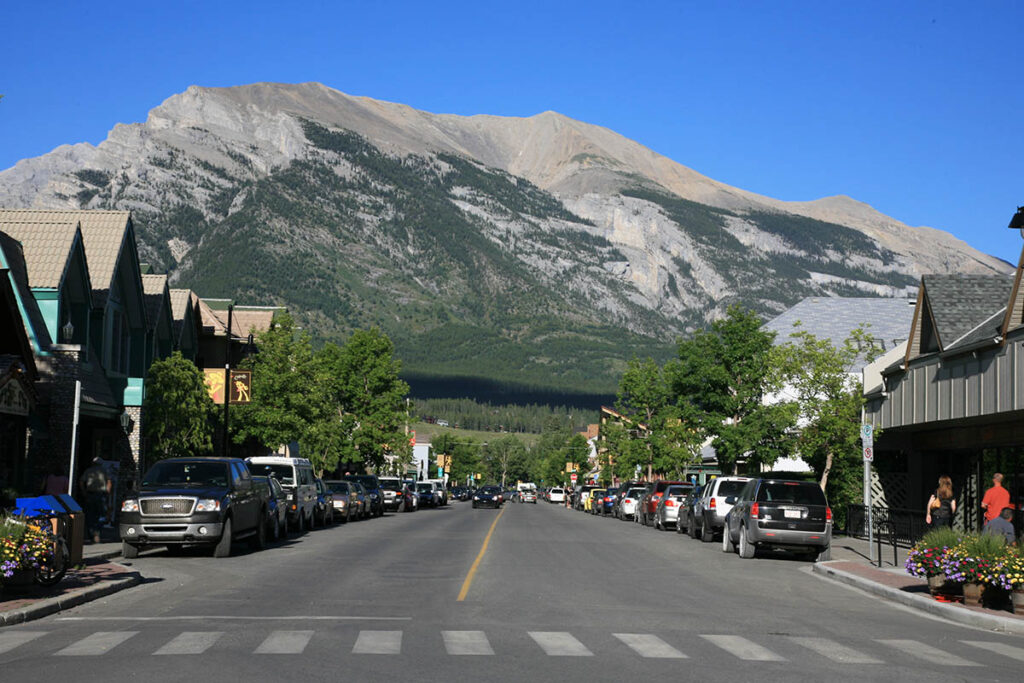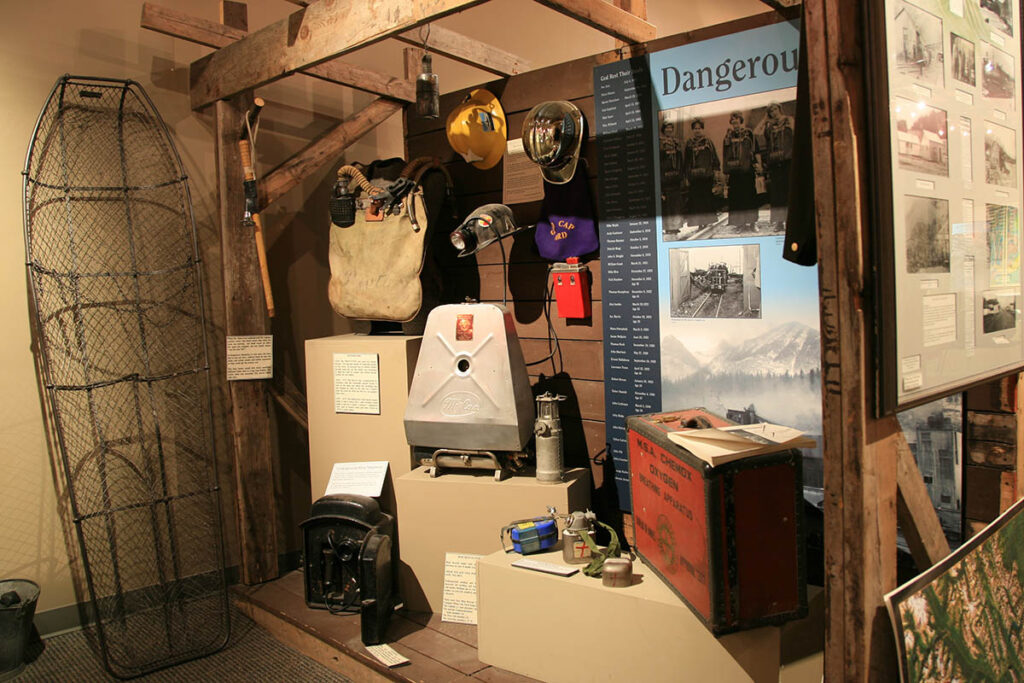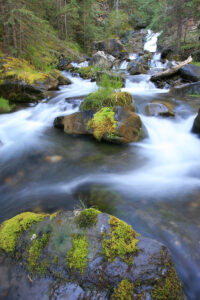Canmore Sights
Through booming times, the original core of Canmore, on the southwestern side of the TransCanada Highway, has managed to retain much of its original charm. Many historical buildings line the downtown streets, while other buildings from the coal-mining days are being preserved at their original locations around town. The best way to get downtown from the TransCanada Highway is to take Railway Avenue from Highway 1A and drive down 8th Street, the main drag (parking is easiest one street back along 7th Street, where one parking lot—at 6th Avenue—is designated for RVs).

Looking north along Canmore’s main street.
Downtown
The first building of interest at the east end of the main street is Canmore’s original NWMP POST (609 8th St., 403/678-1955, 9 a.m. to 6 p.m. daily in summer, noon to 4 p.m. Mon. to Fri. the rest of year, free), built in 1892. It is one of the few such posts still in its original position, even though at the time of its construction the building was designed as a temporary structure to serve the newly born coal-mining town. The interior is decorated with period furnishings, while our back is a thriving garden filled with the same food crops planted by the post’s original inhabitants. The post sits across from Policeman’s Creek, a shallow body of water alive with ducks. RALPH CONNOR UNITED CHURCH, a little farther down 8th Street, was built in 1890 and is now a Provincial Historic Site. The church is named for its first reverend, Charles Gordon, who used the pen name Ralph Connor for the 35 books he authored. CANMORE HOTEL, on the corner of 8th Street and 7th Avenue, was built in 1891 (at a time when three hotels already operated) and is still open for thirsty townsfolk and travellers alike. Around the corner from the hotel, inside the impressive Civic Centre complex, is the CANMORE MUSEUM (902 7th Ave., 403/678-2462, 10 am to 4 pm Thurs.-Mon.). This facility highlights the region’s rich geological history and its importance to the growth of the town and related industries. Geological formations along three local hikes are described, which, along with a small fossil display, microscopes, and computer resources, make this facility an interesting rainy-day diversion.

Canmore Museum.
Coal-Mining History

Several scenic and historic sights lie across the Bow River from downtown, including the remains of various mining operations. To get there, walk south along 8th Avenue for 500 metres (0.3 mile) to the Bow River. With a pedestrian-only bridge and paved paths on both sides of the river leading in either direction, this is a good point to stop and get oriented. A pleasant loop can be made by walking north and crossing the river at the old ENGINE BRIDGE, which once served local mines. Follow the trail back downstream, past the MINE SHAREHOLDERS’ CABIN, a log structure built in 1914. In the same vicinity, a trail leads off from Three Sisters Drive up CANMORE CREEK, passing the remains of a mine site that was first worked in 1891. Beyond the visible coal seam and crumbling concrete foundations is a picturesque WATERFALL tucked along Canmore Creek below a residential development. Backtrack 300 metres (0.2 mile) from the end of the trail and climb the wooden steps, crossing Spray Lakes Road to QUARRY LAKE. This small lake lies in an open meadow and is a popular sunbathing and swimming spot.
